Trouble viewing email? click here (Be sure to see the link at the bottom for more photos.)
July 19, 2011 Safari Day 11
Itinerary: Pack a lunch and drive to see all 4 of the Mana Pools
Animals spotted: hyena, buffalo, warthog, impala, waterbuck, elephant, hippo, maribu stork, egyptian geese, nyala, baboon, cattle egret, slender mongoose, eland, rufous-bellied heron, zebra, terrapin turtles, ground hornbills, vulture, fish eagle, male kudu with long spiral horns, crocodile
Today was an amazing day with all kinds of close encounters!
We woke at 5:30 in the morning for breakfast at 6 and we were on the road by 6:15, just as the sun was rising. We were hoping to find some early morning hunters. We were the first car on the road, even. All kinds of animal prints were crossing and walking along the road from when the last car drove by at 6pm last night to now at 6 in the morning. We found a mishmosh of prints with wild dog, hyena, lion, and buffalo prints all crossing each other.
We drove slowly along starting into the trees hoping to find one of these animals that must have been by recently. Something big seemed to have occured last night with all the carnivore prints we were seeing. Once we caught up to the small herd of buffalo, a couple of photographers were photographing them and chasing them further away.
Further down the road we got our reward for getting up so early. A hyena was hidden in the thicket far off the road. I thought this was my only opportunity for photos of a hyena in the daylight so I started shooting. Then another hyena came running full speed away from the floodplain on our left. Wow! We figured a lion must be chasing him, so we waited. Then about 6 more hyena came running out of the floodplain across the road in front of us! What a sighting! I was in photographer heaven shooting away. Several hyena slowed down enough for some good close-up photos. The day could have ended right now, right here and I’d be one happy camper. I never in my dreams thought I’d get to photograph a hyena on this trip. I thought we’d only see them at night.
After reading the Earth’s Children series by Jean Auel, I am heavily biased against hyenas. In the books, hyenas represent the worst type of creature, ugly, stealing carcasses, and smelling awful. In real life, I have to admit that the hyenas actually had some appeal to them with their round ears giving them a playful look. Now that I’ve seen them up close, I would really love to hear a hyena laugh one day to see if they look like the cartoon versions.
Andrew knew something had to be up with how fast the hyenas came running out of the floodplain. With all the lion and dog tracks as well, we thought the hyenas might have interrupted a kill and been chased away. So, we took a walk to the floodplain. However, nothing was out of the ordinary and all the prey animals were very chill, just raising their heads to look at us and then go back to grazing. There was a waterbuck laying down and posing for me in the grass long enough for me to grab several shots.
We really thought we had to have missed some big story, but we never found it. Instead we kept on going with our day and drove to a water pan for a long walk. The goal of the day was to visit the “Mana Pools” or the four pools that the park is known for. Mana means four in Shona. There are 4 fairly permanent pools that stay wet year round, but when we started asking the names of the pools we found out that everyone calls them something different. I believe the four pools are Long Pool, Chine, Green Pool, and one without any name that the guides can agree on.
There are still several more months of dry season left so there are more than just 4 pools in the area. We visited many today. At this first one, we hiked a bit in. We learned that ant lions walk backwards in the dirt leaving squiggly paths in their wake. Then another insect builds ant traps to catch them which look like the imprint of a sharp, aluminum trekking pole.
Along our walk we spotted warthogs digging in the mud, impala alerted at our presence, and other common antelope. We crossed over a dry pan area with deep elephant tracks dried in about a foot deep in some places. Across the way we saw two bull elephants eating under some winterthorn trees. The big one stood on his hind legs, lifting his front legs in the air to reach the higher branches!! Holy cow that’s amazing. I wasn’t set up for photos and we were still too far, but we settled down into a low point in the pan to watch. Soon, the big guy reared back, bundled his muscles under him and reached higher, higher, and higher, lifting his front legs as his trunk helped steady him. He grabbed a huge branch and pulled it down with a whooomph. Only a few bull elephants in the park can manage this feat and I still can’t believe we got to witness it. It takes them a LOT of effort to lift the front of their bodies and we saw him do it twice!
We kept walking and walked near a maribu stork, an ugly scavenger bird. Owen asked Andrew why this one looked so beautiful when they are usually considered ugly birds. Mark and I laughed hard when Andrew told him that this one must have gotten up on the right side of his bed. Nothing like a little safari humor.
The trees with hanging strings from the branches are called sausage trees for the sausage-shaped fruits that hang on these strings during the wet season.
Back at the car, we drove near a young male elephant who was out on his own. We could see he was young by the size of his tusks and the fact that he wasn’t huge. This guy was rather curious about the land rover creature that appeared next to him. He sauntered up to us to see what we were. He lifted his trunk to smell us, and came so close, I thought he was going to reach in and touch Mark’s head with his trunk! We were within trunk’s reach for sure. We all sat very still and quiet and couldn’t believe our amazing experience with this young bull. Eventually the elephant wandered off and we could breathe again. He never charged or posed a threat to us and I got some great close up photos. With him so close I was deciding which part of him to photograph, which toe, and which wrinkle in his skin.
Down the road a bit further we scared a female warthog. When they get scared, the run with their tails held straight up in the air, just like the antenna on a remote-controlled car. =) She had the biggest tusks that our guide had ever seen on a female.
In the distance we could see vultures landing on the ground indicating there might be a carcass. It wasn’t too far off the road, so we parked and went for a walk. However, the vultures were tricking us and lead us to a very old hippo carcass that had been dead for many years. Apparently they can eat old bones for calcium when they are going to lay eggs and when several vultures land, more join them to see what’s up. They sure fooled us.
At Long Pool, Andrew pointed out the “surfing” heron riding on a hippos back. Long Pool is the first of the mana pools. We didn’t stay long, though many hippo came up to see what we were doing there. It was time for lunch and Andrew took us to a little pool he knew of with a shady area to eat. We set up our lunch table and chairs; the same ones we’d taken canoeing, so we knew just how to set us all up. While we ate, we watched the plethora of wildlife at the pond. When we arrived there was an old hippo hanging out with many red stripes of long scratches on his back. He probably came here to recover. We saw two egyptian geese with 6 little gooselings swimming around. Then, amazingly two nyala antelope came down to drink. These are some of the rarest of the antelope breeds to spot and this is the only time on our whole trip tha we found nyala. They look similar to eland with the white stripes, but are smaller in size like impala. They live in the thickets and jess bush normally. After the nyala left, several impala came down to drink and we realized this was probaby the first time we’ve seen impala calm enough to drink. Baboons were climbing around on the ground and trees. A lilac breasted roller was flying in the background and several cattle egret were poking around. I’m sure we saw a heron or two as well. We saw a slender mongoose come to drink and dig in the mud.
Our next stop was Chine, the water pan that Mark and I had visited the other day on the way back from our canoe trip. We hiked in a different way this time, from the back to end up on the hill where we had seen the buffalo the other day. On the hill we could see down to the water pan where a lone buffalo was watching us. He ambled over behind a termite mound and continued to watch us carefully. On the other side we could see eland, impala, and waterbuck grazing.
A giant shell on the ground was the shell of a giant land snail. The shell was as big as my hand! I can’t believe there are snails this large. Andrew has never seen one alive, but we’ve seen several of the spiral shells.
After hiking so much today with my long telephoto lens, my shoulder needed a break. I carry the lens facing backwards on my shoulder next to my head with the monopod attached in front. It’s a very stable position, but it does get tiring after a while. So, I stopped to remove the monopod and carry my setup differently. I knew as soon as I did this something would happen. Just as I was thinking this, we heard a warning snort from the thicket. Andrew and Owen were ahead of us and stopped to listen as well. Andrew said it sounded like a zebra snort, but there was no way the zebra were in that thicket. They don’t like the thickets.
Sure enough, though, as we watched a small herd of zebra were peering through the thicket at us and the big male was snorting at us. We watched and took photos. Then, they all galloped out to a position right in front of us and stared us down. There were 2 males, a female, and 2 kids. We were stuck in a standoff for several long and amazing minutes. Zebra usually stay far away from humans even in land rovers and this is probably the closest we’ve been so far and we were on foot! They were standing directly in our path towards the car, and I’m sure we were standing directly in their path towards the water. It was a game of chicken to see who would move first. I was kneeling on the ground very happily taking as many photos as I possibly could. Today is such an amazing day with great experiences like this!
Zebras toss their heads a lot to get rid of bugs. Their main stands up along their back with help from a layer of fat along their back. At the end of the dry season when conditions are poor you can tell the zebras are malnourished because their mane is flopped over as they’ve lost that layer of fat. Eventually, the zebra moved out of our way and we continued back to the car.
At the next pond (might have been green pond) we didn’t have to leave the car to see the baboons munching on the water hycinth that gave the pond it’s green color and name. The small heron we found was a rufous-bellied heron. At the next pond we found terrapin turtles, but I’m not sure which one as I see there are at least 4 species of terrapin.
At this point in our day’s journey we’ve seen the 4 mana pools and it was time to start driving back. The drive was incredibly dusty going back since it was the end of the day and several land rovers have been by. I kept all my gear covered all the time in the land rover with a towel. It makes it hard to quickly react and take photos, but dust and cameras do not get along well. When we drive I hold the monopod between my left knee and the side of the car, my D300 with the 200-400mm lens in my lap covered tightly with a towel, and hanging on my right side, my D70 with the 18-200mm lens under my arm and part of the towel as well. By the end of our trip, my muscles were sore from holding all my gear tightly as we bounced along. I guess it’s one way to exercise while driving. =)
We stopped to watch an elephant on the side of the road with a calf about a year old. Baby elephants fit completely under their mother’s stomach when they are less than 6 months old, and are just taller than the bottom of her stomach when they are a year old. We drove past a baboon hugging a termite mound and trying to look invisible. I think today we’ve seen every single impala in the park as well. They are scattered all over and we’ve driving nearly all the roads in the park.
Ground hornbills have a great song that they sing in duet at dawn and at dusk and Andrew would try to remember to point it out if we ever heard it. Baboons usually hide in the trees when they see any animal except the human. For humans, they will jump out of the trees and run away. I found this incredibly interesting, but it made sense now why when we drove up on a tree full of baboons they all leaped out to run away with large thumps onto the ground. The hooded vulture is the ideal vulture photo with it’s blue/red head. We found several slender mongoose from the road.
We stopped to stretch our legs and admire the scenery at a stop that we now call hippo point. We’ve stopped here every morning on the way out and every evening on the way in. There is a hippo or two out on the point of an island on the Zambezi River. We were lucky today and found a fish eagle on the bank of the river eating a fish caught recently.
After hippo point, the drive home is very short and we admired the lovely sunset through the naked tree limbs. Back at our room it was so nice to shower off all the dust from the road. The staff made wonderful steaks for dinner and we got to meet the new family of 4 that joined us at Vundu.
A monitor lizard seems to live near our cabin since we saw tracks going one way when we got back from our drive and then going the other way when we got back from dinner. We went out to the river with Andrew for a little bit and admired the southern sky full of stars now that the moon is rising later at night. We are going to set up a night later in the week where Andrew will sit with us while I take some star photos. Now it’s off to bed after a near perfect day.
—————————————————————————————————————————————————————–
Below you’ll find a slideshow from flickr showing more photos. If the slideshow does not appear, please click on this link to see the original post: http://thetravelgeeks.com/?p=454 and scroll to the bottom. To view the slideshow, click once on the play button, or triangle, in the middle of the image below.

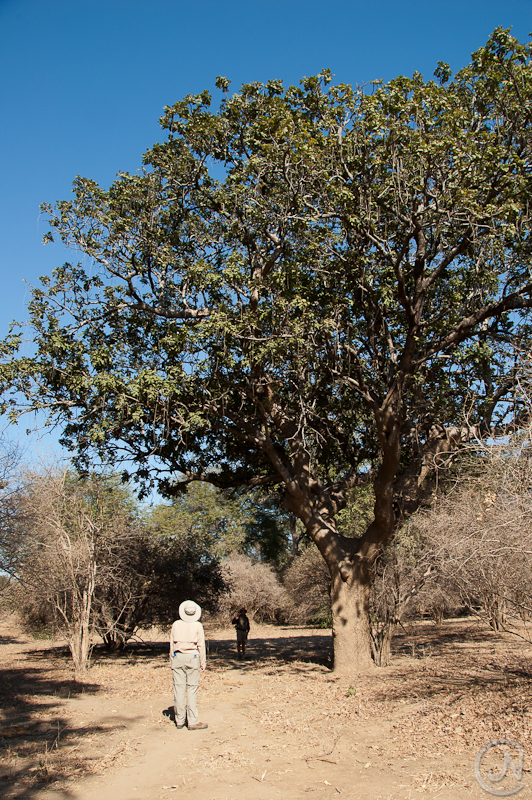
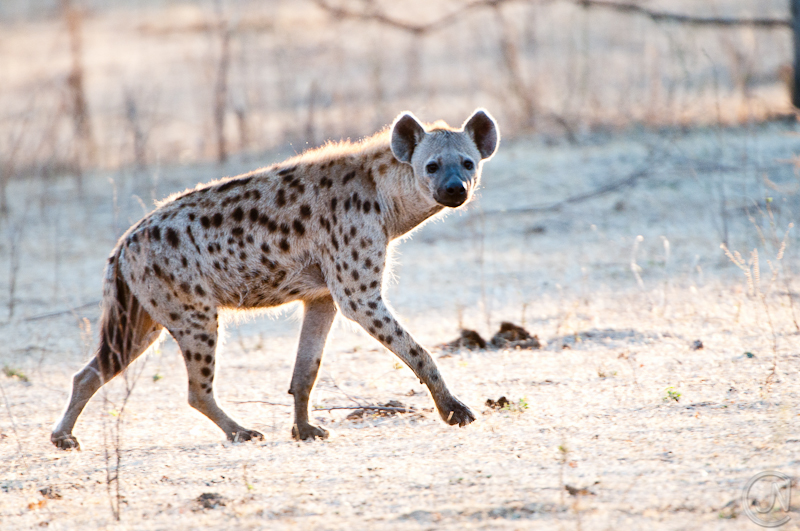
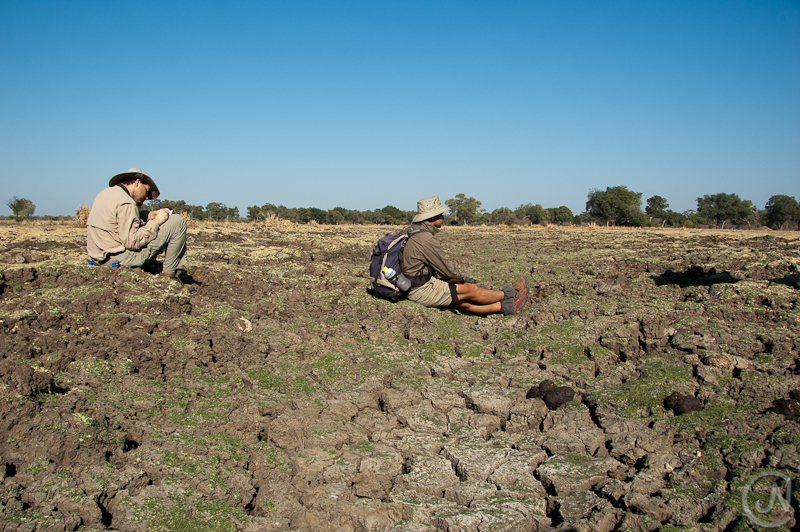
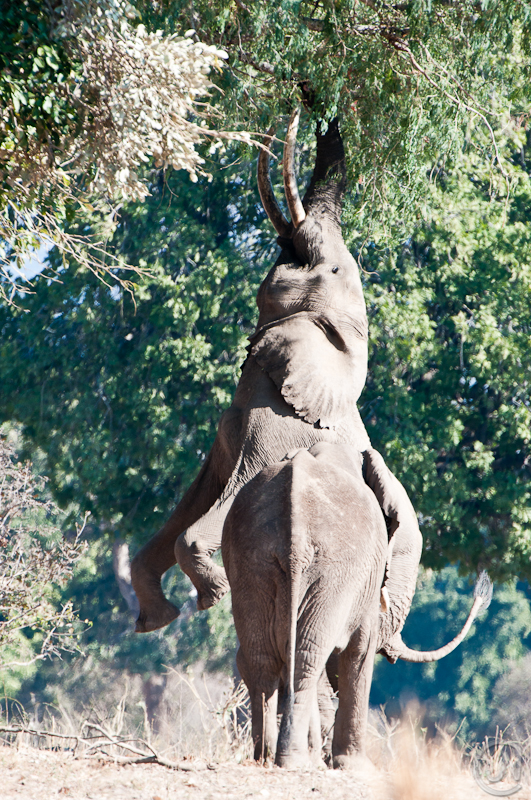
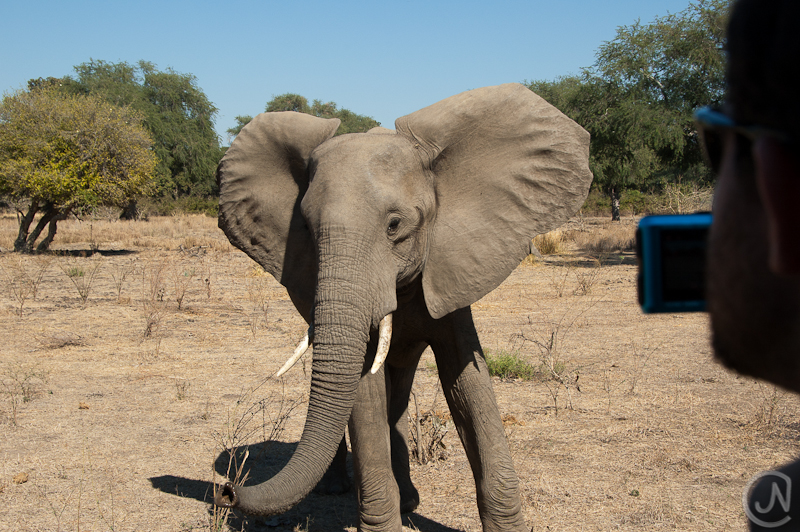
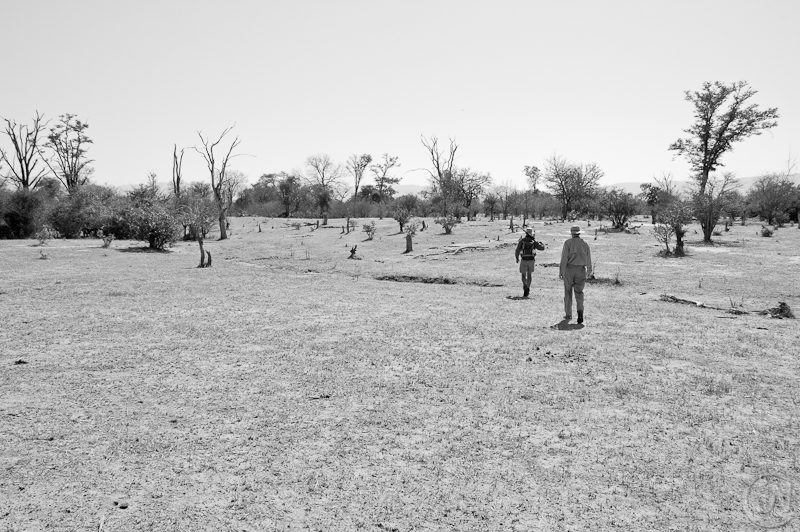
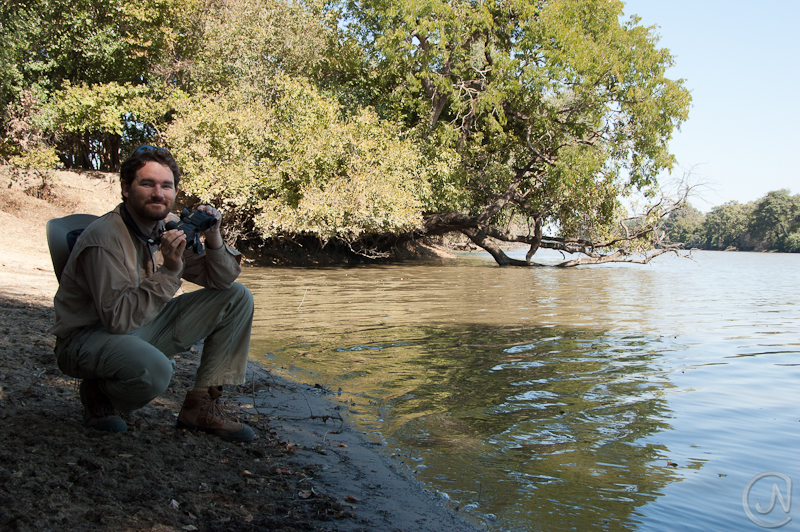
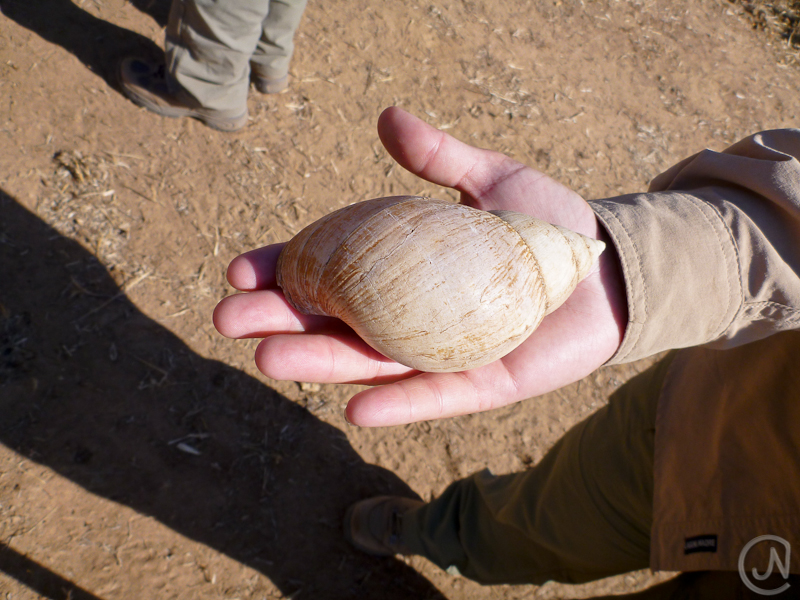
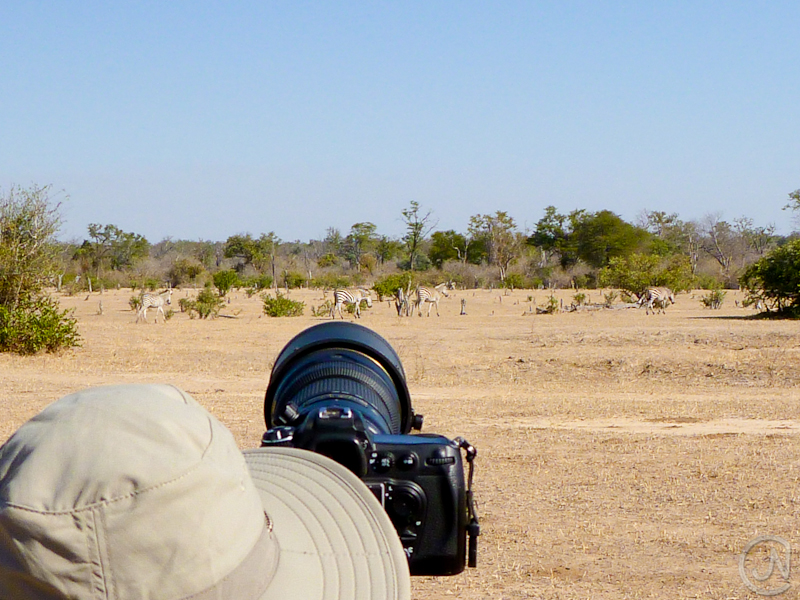


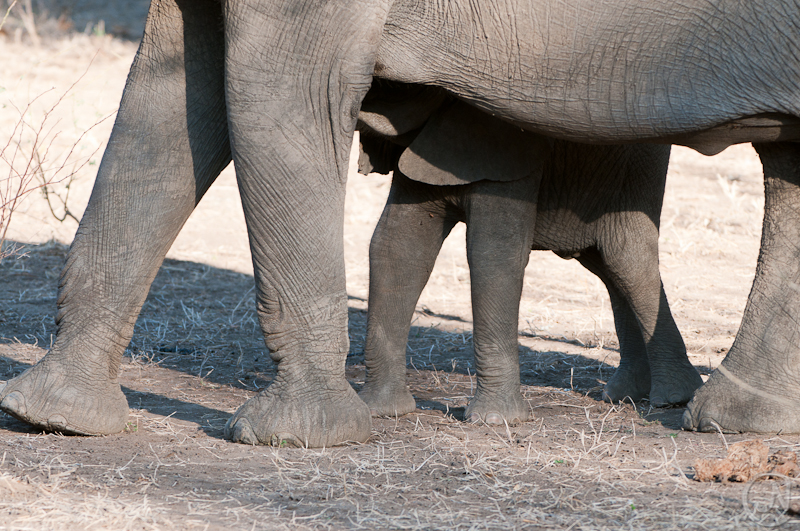
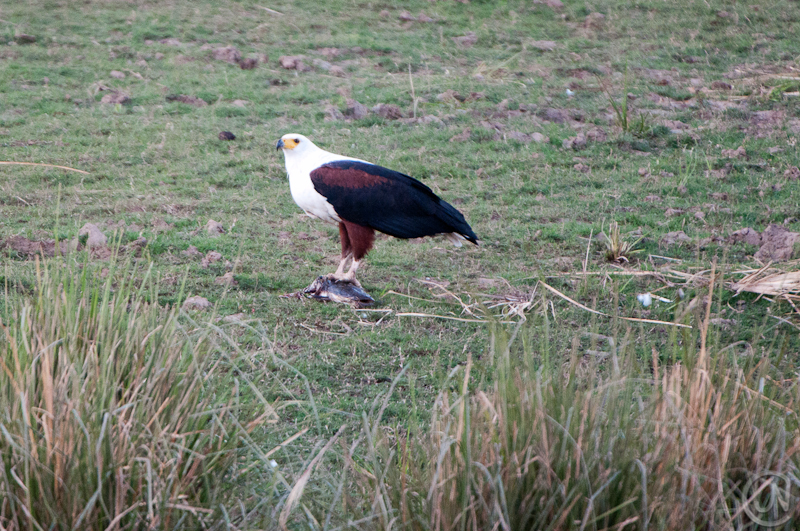
Loved the picture of the Bull Elephant! And the Zebras….Beautiful. You are doing a great job with your camera.